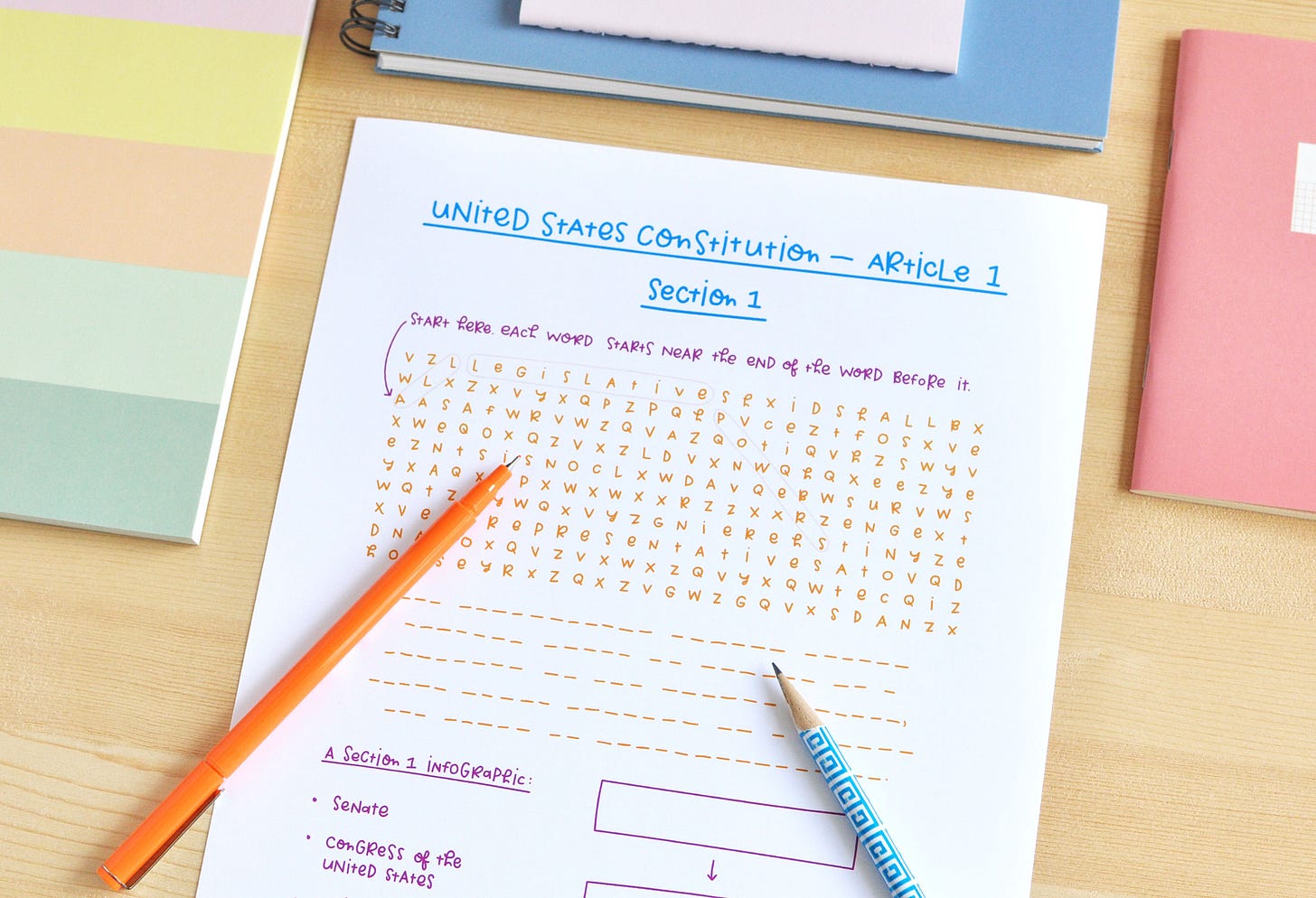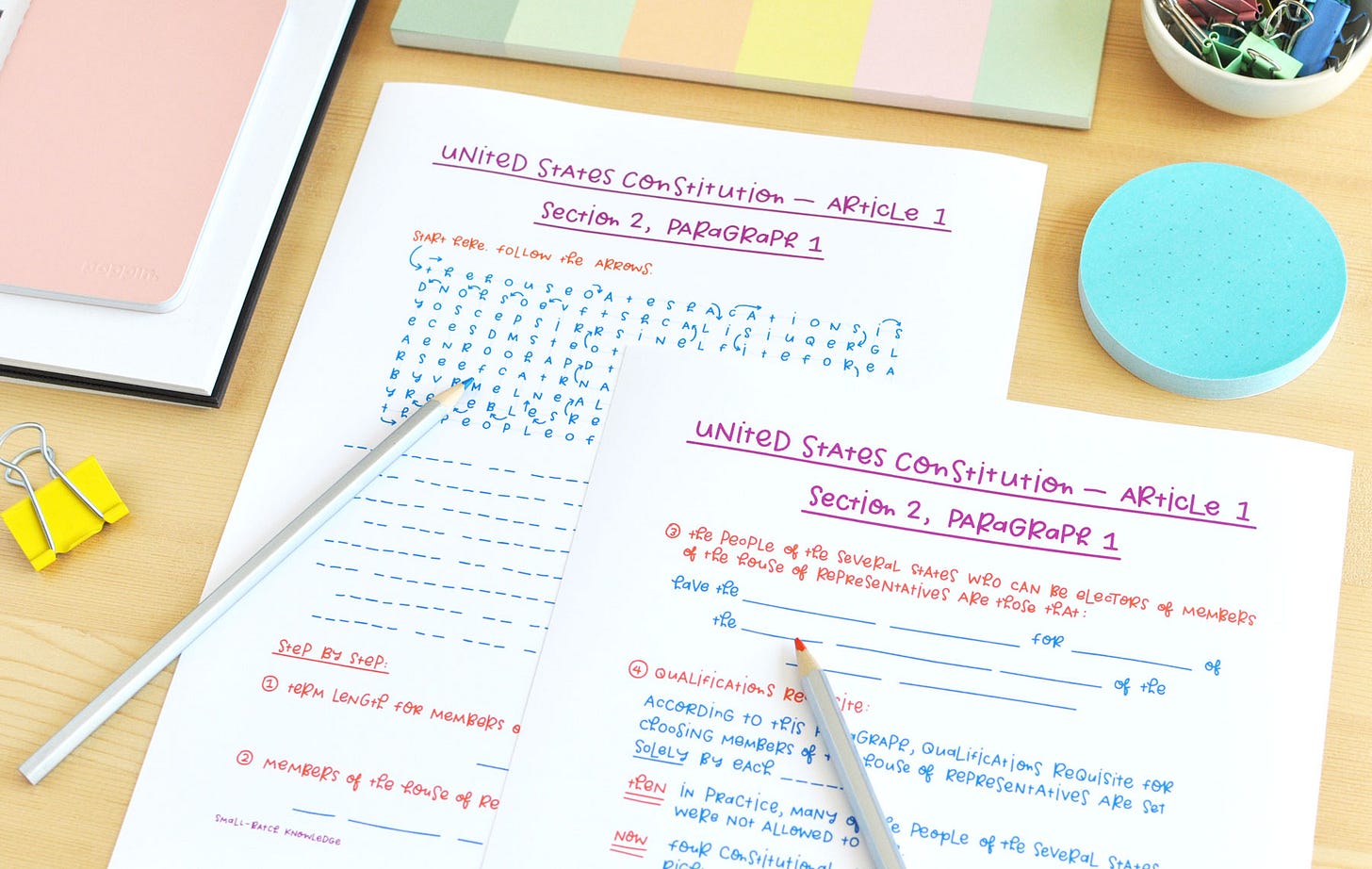Reading the United States Constitution seemed easy enough at first. After all, I read lots of things, all the time! And why not journal along the way? My favourite thing ever. It’ll keep me on track.
The Preamble is reassuringly familiar. It embraces monumental principles like liberty, welfare, justice, and tranquility, and it’s timely, with lots of parallels to personal reflective practice.
I couldn’t wait to dive into Article 1*.
Happily, the first section is super straightforward. The power to make laws is assigned to one body, which, in turn, consists of two more. I made a colourful puzzle for the text and drew a quick, fillable diagram to plug in the working parts of Section 1. Easiest infographic ever.
So fun!
Things became slightly trickier at the beginning of the next section, which details how members of the House of Representatives are chosen:
The first paragraph appears to give power to the People and then take some of it away.
It seems to introduce different terms to refer to the same people.
It’s also impacted by four pivotal Amendments.
I needed two journal pages to sort through it, which, looking back now, seems pretty easy, given what comes next.
Barely three sections into the first article, I’m buried in details. No fewer than six Constitutional Amendments impact just the first two sections and one sentence has already been replaced entirely.
I have discovered that simply reading the Constitution, a little at a time, isn’t enough. In order to understand what it means, even in general terms, I need to figure out which details to pay attention to, which ones to ignore, and which ones to come back to later.
So far, it feels quite chaotic, which is, perhaps, a tiny reflection of what it must have been like — and still is — to grow and manage a thriving nation.
Hmm. Thinking about it that way makes me feel better! Perhaps the confusion, uncertainty, and back-and-forth, are simply natural parts of the process of creating — and understanding — an operational document like this one.
This is what I know right now:
I’m going to make mistakes as I read and write (and I’m hard on myself when I make mistakes).
I’ll have to try again in some places (and that will be tedious).
I’ll feel overwhelmed a lot (and I’ll second-guess my approach).
At times, I’ll feel unequal to the task (and I’ll think about quitting).
It won’t happen as quickly as I’d like it to (and that will be frustrating).
Thankfully, a reflective, journal-related approach is here for it all.
For me, that implies a flexible process dedicated to understanding via small, manageable steps, curiosity, patience, skill-building, and, most of all, I think, showing up for yourself when there are hard things to do.
Ooh, I like that last part: showing up for yourself when there are hard things to do.
Here’s a closing thought for your journal:
What’s one part of your world that feels chaotic lately? What’s one way you’re showing up for yourself to manage it?
___
*I’m still working out which terms to capitalize and which terms not to capitalize. Currently, I’m capitalizing specific references, i.e., Article 1, Section 1, but not general terms, i.e., articles and sections. I’m stuck on the Constitution and Amendments, though, which are often capitalized generally and specifically. It’s a work in progress.







I love how you're linking your leaning within the Constitution to our own lives. Chaos?! I'm heading to my notebook. =)